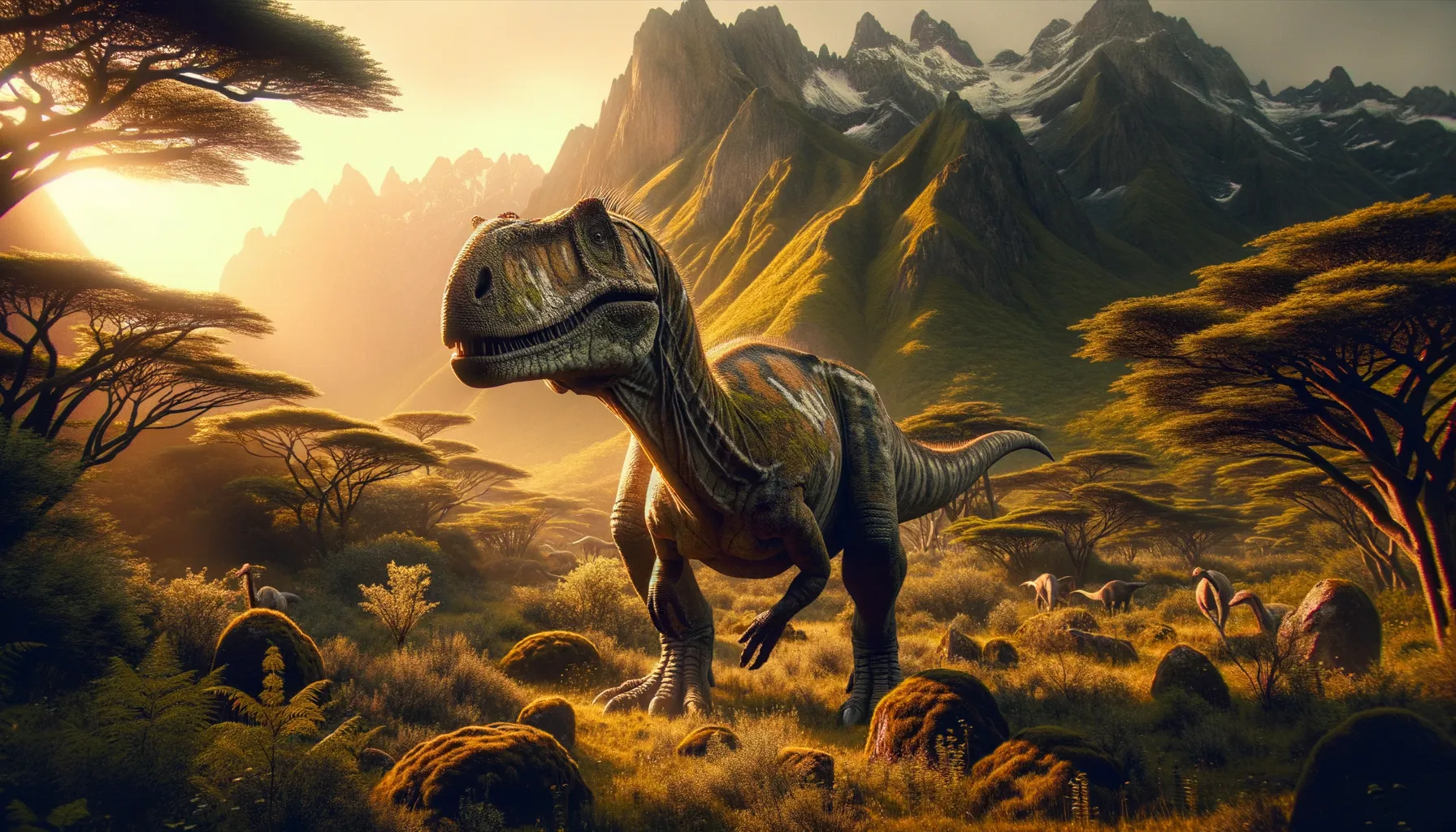
Isaberrysaura
Unearth the mystery of the Southern herbivore.
Period
Jurassic
Length
Approximately 7 meters long.
Height
Around 1.5 meters at the hips.
Weight
Roughly 2 tons.
Isaberrysaura was an herbivorous dinosaur from the Jurassic period. It lived in what is now Argentina, and its discovery provided valuable insight into the diversity of plant-eating dinosaurs in the Southern Hemisphere. It was notable for its large body size and specific cranial features, suggesting it had unique feeding habits compared to other contemporary herbivores.
Diet
Isaberrysaura was herbivorous, eating a variety of plant materials that were available during the Jurassic period. It likely consumed ferns, cycads, and other available vegetation in its environment.
Hunting
As a herbivore, Isaberrysaura did not engage in hunting behaviors. It would have spent much of its time foraging for food and utilizing its cranial features to consume plant material efficiently.
Environmental challenges
During its time, Isaberrysaura faced environmental challenges including climate fluctuations and changes in vegetation patterns. It had to adapt to these shifts to maintain a consistent food supply. Predators also posed a constant threat, prompting the need for group living for protection.
Speed
Likely slow-moving due to its size and build.
Lifespan
Estimated at several decades, similar to other herbivorous dinosaurs.
First discovery
Discovered in Argentina in 2009 by Bernardo Javier González Riga.
Fun Facts
- Isaberrysaura lived during the Jurassic period, around 170 million years ago.
- The dinosaur was discovered in Patagonia, Argentina, reflecting the rich fossil history of the region.
- Isaberrysaura had a unique skull shape that intrigued scientists when it was first discovered.
- It belonged to a group of dinosaurs called ornithischians, which were mostly plant-eaters.
- Fossil evidence suggests that Isaberrysaura may have had a beak-like mouth ideal for eating tough vegetation.
- The name 'Isaberrysaura' honors Isabel Valdivia Berry, a woman who significantly contributed to Argentine paleontology.
- Its remains were found alongside ancient seeds, giving insights into its diet and the ecosystem it lived in.
Growth and Development
Isaberrysaura likely experienced a slow growth rate, gradually increasing in size over several years. As a juvenile, it might have been more vulnerable to predation, altering its habits as it matured. The presence of diverse plant life would have supported its development by providing essential nutrients for growth.
Habitat
Isaberrysaura inhabited lush forested areas with abundant plant life. These regions provided ample food resources and shelter from potential predators. Its habitat would have included a mix of open spaces and dense vegetation, offering varied environments for feeding and protection.
Interaction with other species
Isaberrysaura would have shared its environment with other herbivorous and carnivorous dinosaurs. It might have engaged in defense mechanisms to protect itself from predators. Interactions with other herbivores could involve competition for food resources or communal living arrangements for increased protection.
Natural lifespan
Its natural lifespan was likely several decades.
Reproduction
Reproduction likely involved egg-laying, as with most dinosaurs. Nesting sites would have been chosen carefully to ensure offspring safety and warmth. Parental care might have included protecting the nest from predators.
Social behaviour
Isaberrysaura may have exhibited social behaviors, living in herds for protection against predators. This communal lifestyle would help in foraging and caring for the young. Social structures likely contributed to survival in a predator-filled environment.
Fossil locations
Fossils of Isaberrysaura have been found primarily in Argentina. These discoveries have contributed to understanding the distribution and diversity of dinosaurs in South America during the Jurassic period. Further fossil findings continue to refine the picture of its geographical spread.
